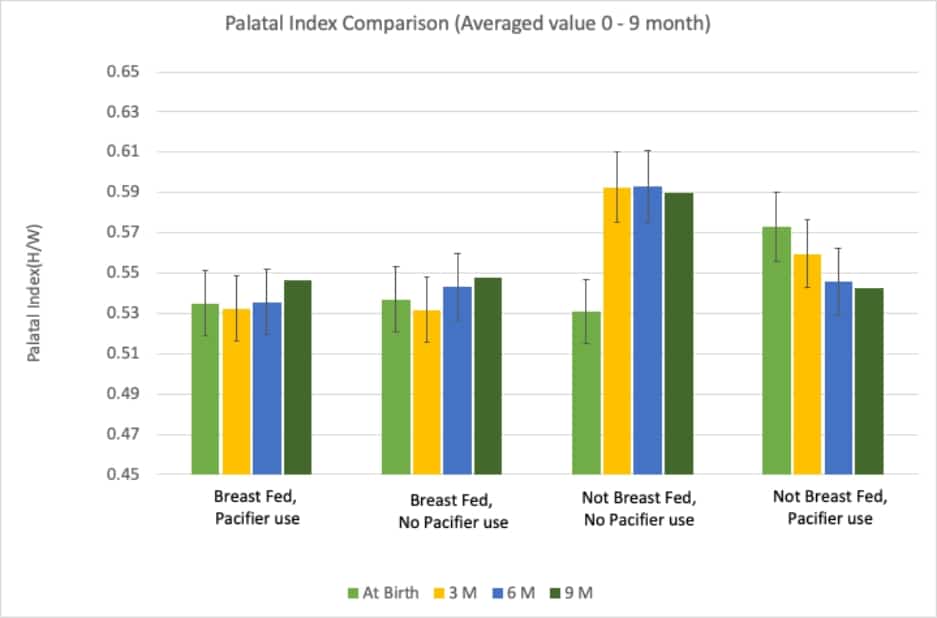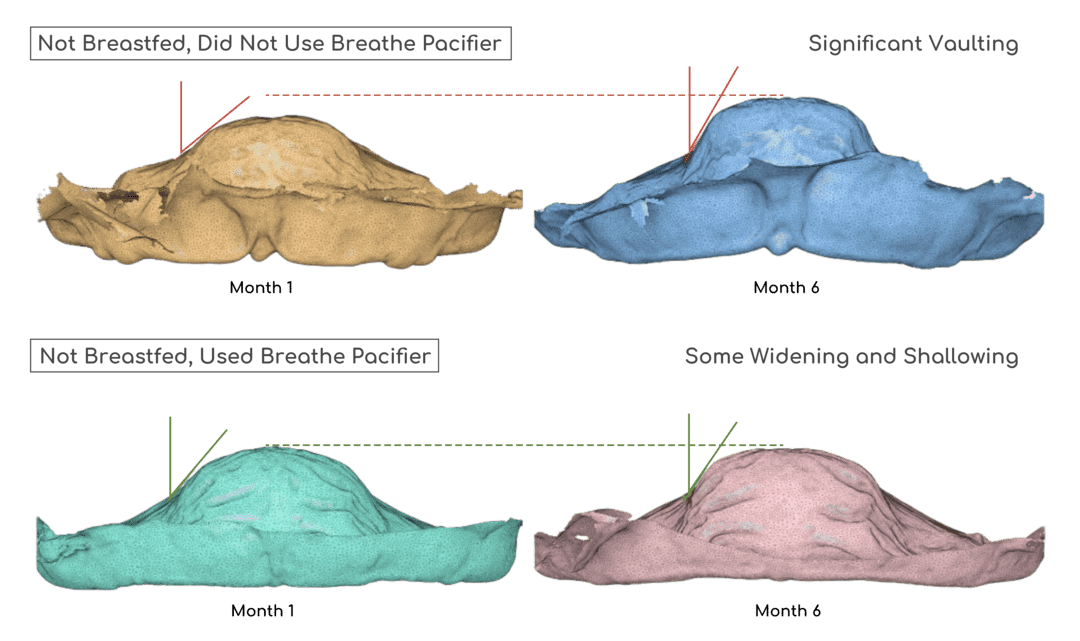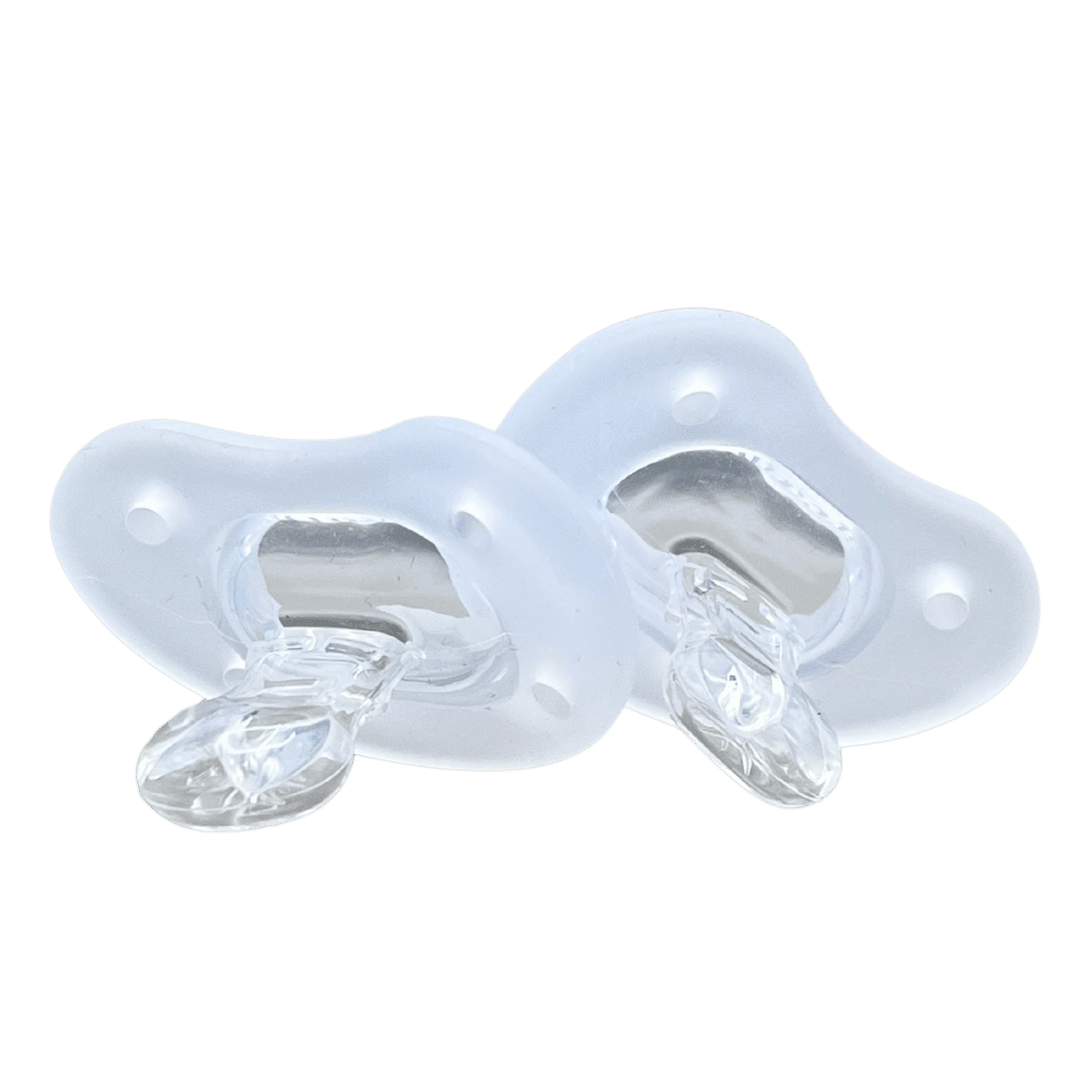Research That
Shapes the Future
Research conducted with the highest scientific and ethical standards confirms that the Breathe Pacifier encourages ideal palate development.

Our Study
Our initial Doctor Supervised Research Study was approved for 50 babies over a two-year period. To provide a thorough and unbiased assessment of the results, the research included four categories of babies:
100% breastfed and used the Breathe Pacifier
100% breastfed and didn’t use the Breathe Pacifier
Never breastfed and used the Breathe Pacifier
Never breastfed and didn’t use the Breathe Pacifier
Every baby had an oral scan every three months to monitor the shape and development of their palate.
Key Findings
#1
100% of babies who used the Breathe Pacifier, even those never breastfed, showed ideal wide and shallow palate development—virtually identical to exclusively breastfed babies.
#2
Babies who weren’t breastfed and didn’t use the Breathe Pacifier developed progressively narrower, more vaulted palates.
#3
Babies who switched to the Breathe Pacifier mid-study saw dramatic improvement—within months, their palates became nearly identical to 100% breastfed babies.
This bar graph shows aggregated results from the study for the babies in each group. The shorter the bar the more ideal (wide and shallow) the shape of the palates of the babies in that group.

Breathe Baby Products is preparing for an even larger study involving hundreds of babies, independently conducted by one of America’s largest hospital groups. We will continue to update this page as the trial progresses.
I’m A Dental Professional
I love Breathe because I want to help my baby avoid palate expanders and orthodontic work later in life.
Why Early Intervention Matters
Rapid improvement is possible at a young age because a child’s palate is soft, malleable bone until around five years of age. These results are encouraging—what child wouldn’t be better off simply using a pacifier rather than enduring the discomfort of rapid maxillary expanders or braces later in life?
Study: 85% of Maxilla Built by Age 5
Key Points
- Overall, the maxilla (upper jaw and palate) grows in a forward and downward projection with steady/passive growth until age 5 years, where it is 85% of its eventual adult size.

Study: Breastfeeding and Jaw Development
Key Points
- During infancy, a baby’s soft palate is soft and “wax-like.”
- Breastfeeding supports good jaw development because of the unique way it encourages the tongue to press against the soft palate of the mouth.
- Bottle feeding does not cause the same action, which is why children who are exclusively bottle-fed have a much higher risk of orthodontic issues.
- Breastfeeding’s impact on jaw growth is also good for the development of a baby’s airway. This may help prevent problems with sleep-disordered breathing, such as sleep apnea.
3D scans of the palates of two babies in the study (one month after birth and then six months later) illustrate how rapidly negative change can happen. Imagine what the palate and internal facial structure of the Not Breastfed, No Pacifier Use first baby will look like in three more years.

Want To Give Your Baby The Best Health Possible?
Set Your Child Up for Lifelong Health with Breathe Products
Parents everywhere now have the option to use pacifiers designed with the goal of encouraging ideal oral and facial structures for a lifetime of better breathing and health.
Study: Breastfeeding And Maxillary Development
Key Points
- Breastfed babies have a better chance of improved oral and dental health than their counterparts that were artificially-fed.
- Breastfeeding has positive effects on the development and physiological integrity of infant’s oral cavity. Breastfed babies have a better chance of improved oral and dental health than their counterparts that were artificially-fed.